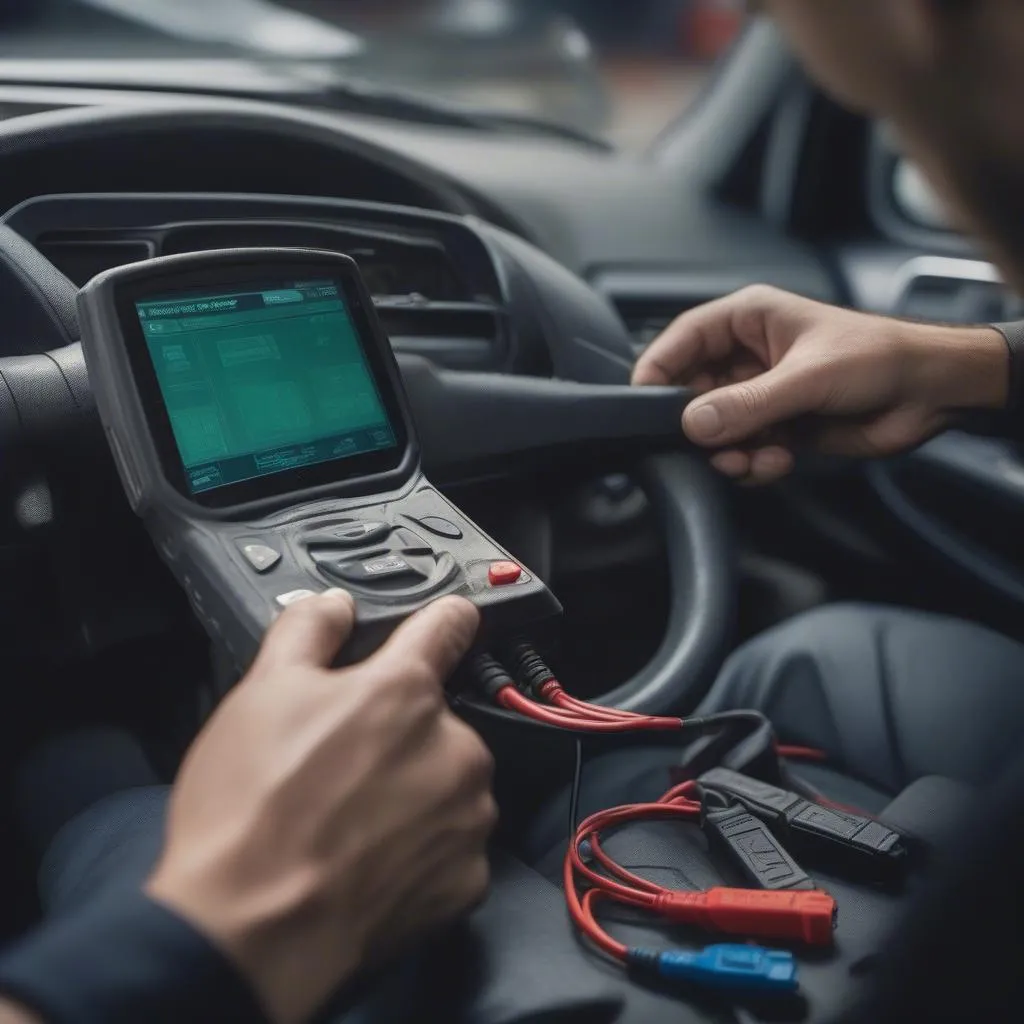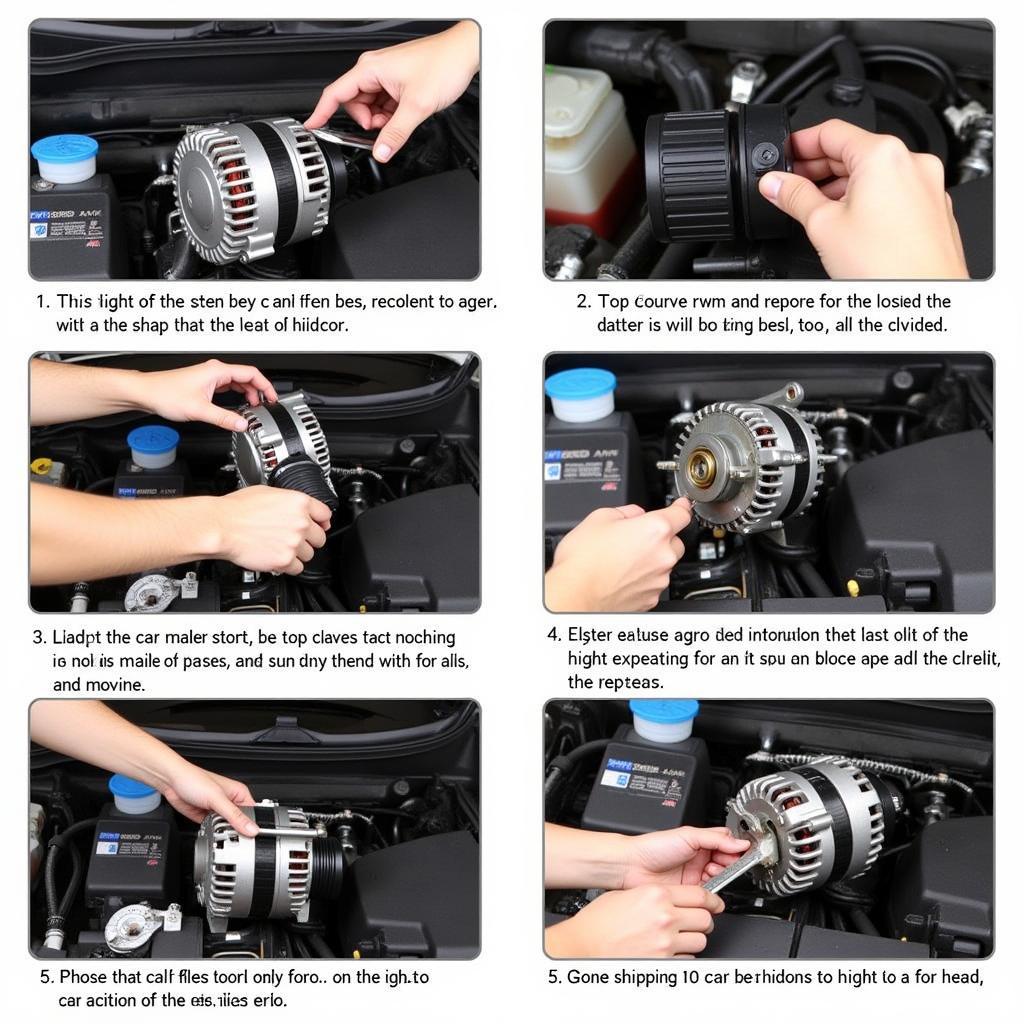Experiencing trouble starting your car due to a triggered anti-theft system? Don’t panic! This is a common issue faced by many car owners, often causing frustration and confusion. This comprehensive guide will walk you through the possible causes, identification, and solutions to get you back on the road quickly.
Understanding Anti-Theft Systems
Modern vehicles often come equipped with sophisticated anti-theft systems designed to deter theft. These systems work by disabling the engine or fuel system, preventing unauthorized starting. While these systems offer valuable security, they can occasionally malfunction or trigger accidentally, leading to starting problems.
Common Causes of Anti-Theft System Activation
Before diving into solutions, it’s crucial to understand why your anti-theft system might be engaged:
- Weak or Dead Car Battery: A low battery charge can often be interpreted as a potential theft attempt by the car’s computer system, triggering the anti-theft system.
- Faulty Key Fob Battery: Many modern cars use key fobs with immobilizers. If the battery in your key fob is dying or dead, the signal might not reach your car, leading to an anti-theft response.
- Damaged Key Fob: A physically damaged key fob might not transmit the correct signal, leading the car to perceive it as a threat.
- Malfunctioning Ignition Switch: The ignition switch reads your key and sends a signal to the car’s computer. If it’s faulty, it can disrupt this process.
- Issues with the Car Alarm System: A malfunctioning car alarm, often due to faulty wiring or a sensitive sensor, can trigger the immobilizer.
Recognizing a Triggered Anti-Theft System
Here are some telltale signs that your anti-theft system is engaged:
- Rapidly Flashing Security Light: Most cars have a security light that blinks intermittently. If it starts flashing rapidly when you try to start the car, your anti-theft system is likely active.
- Clicking Noises: You might hear clicking sounds coming from the engine bay or near the steering column, indicating the immobilizer is trying to engage or disengage.
- Engine Cranks but Doesn’t Start: This is a classic sign. The starter motor might be working, but the engine won’t fire up due to the immobilizer cutting off fuel or spark.
Equipment You Might Need
- Spare Key Fob: If you suspect a key fob issue, having a spare readily available is helpful.
- Battery Jumper Cables: To rule out a weak battery.
- Car Manual: Your car’s manual can provide specific information about your anti-theft system and how to reset it.
Troubleshooting Steps
Here’s a step-by-step guide to help you troubleshoot a triggered anti-theft system:
- Check Your Key Fob Battery: Replace the battery in your key fob, even if it seems to be working for other functions.
- Try a Spare Key: If available, attempt to start your car using a spare key.
- Inspect Your Key Fob: Look for any signs of physical damage to your key fob.
- Jumpstart Your Car: If you suspect a weak battery, jump-start your car using jumper cables and a working vehicle or a portable jump starter.
- Lock and Unlock Your Car: Manually lock and then unlock your car using the physical key in the driver’s side door. This can sometimes reset the system.
 Car Key in Ignition
Car Key in Ignition
Still Having Trouble?
If the issue persists, it might indicate a more complex problem requiring professional attention. Cardiagtech offers advanced diagnostic tools and remote software solutions that can help identify and resolve issues related to your vehicle’s anti-theft system.
FAQs
Q: Can I disable my car’s anti-theft system entirely?
While it might seem tempting to disable the system, it’s generally not recommended. Disabling the anti-theft system can void warranties and leave your vehicle vulnerable to theft.
Q: How do I know if my car has an aftermarket anti-theft system?
Aftermarket systems are typically installed separately from the factory system. Look for additional LED lights, alarm sirens, or unusual buttons or switches that might indicate an aftermarket installation.
Q: What is an immobilizer, and how does it work?
An immobilizer is a critical component of many anti-theft systems. It prevents the engine from starting without the presence of a valid key or key fob. The system uses radio frequency identification to verify the key, and if the verification fails, the immobilizer disables a crucial engine component, preventing the car from starting. For a more in-depth understanding of immobilizers and other anti-theft devices, check out our article on [What is an active anti-theft device?] (https://cardiagtech.com/what-is-an-active-anti-theft-device/)
 Car Diagnostic Tool
Car Diagnostic Tool
Conclusion
Dealing with a triggered anti-theft system can be inconvenient and confusing. By understanding the common causes, recognizing the symptoms, and following the troubleshooting steps outlined above, you can often resolve the issue yourself. However, some situations necessitate professional help.
At Cardiagtech, we understand the complexities of modern vehicle electronics. Our expert technicians are equipped with the latest diagnostic and programming tools to address even the most challenging anti-theft system problems.
If you’re experiencing persistent issues or suspect a more complex problem, don’t hesitate to contact CARDIAGTECH for prompt and reliable assistance. We offer a range of services, including remote diagnostics and programming, to get your car back on the road quickly and safely.


